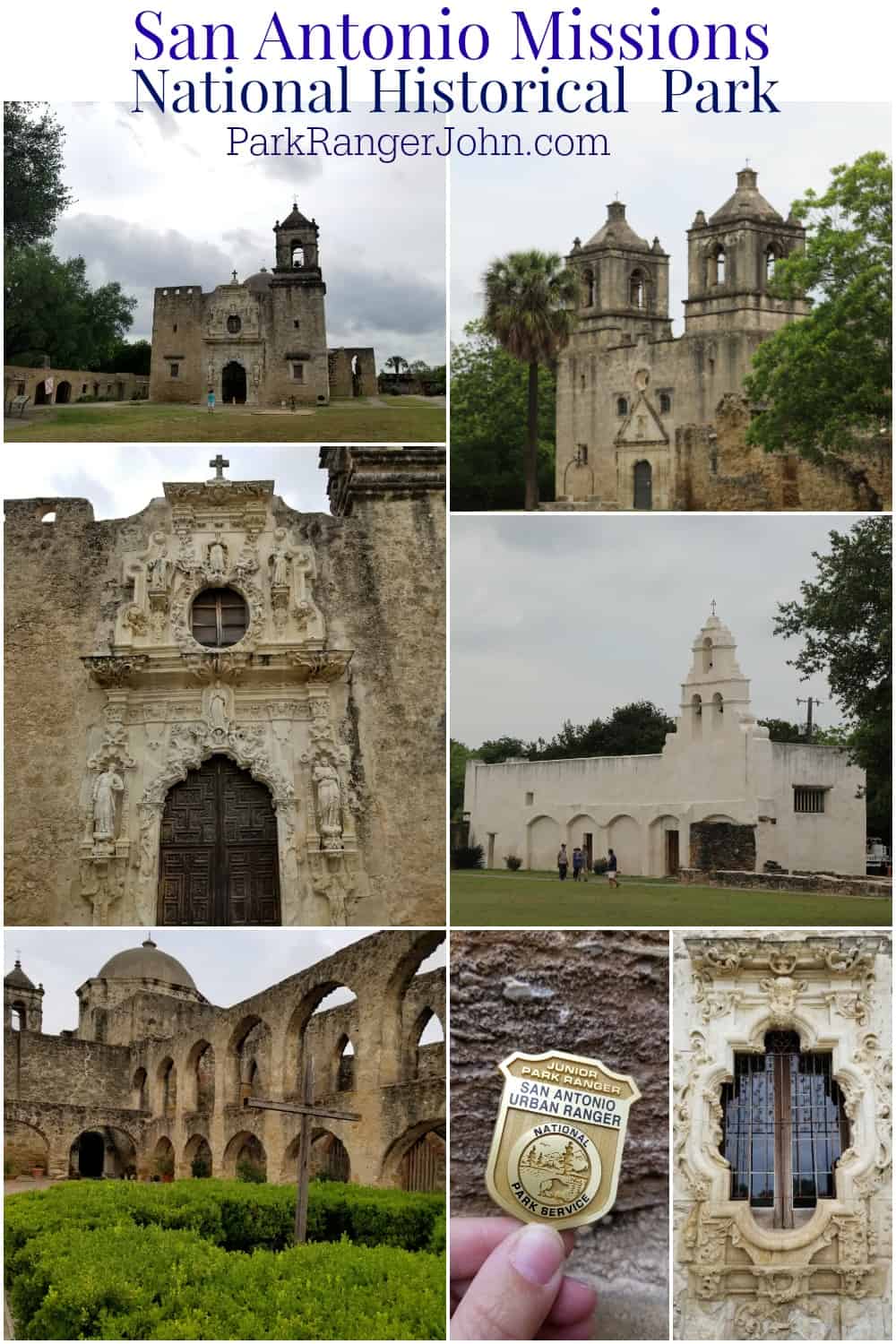San Antonio Missions National Historical Park Reviews: What Visitors Are Saying
San Antonio Missions National Historical Park Reviews: What Visitors Are Saying
Blog Article
Discover the Rich Background of San Antonio Missions National Historical Park: a Comprehensive Overview to Its Cultural Value and Preservation Efforts
San Antonio Missions National Historic Park stands as a testament to a past era, encapsulating an abundant tapestry of background and social importance. As we start a journey via the historic history of these objectives, we reveal building wonders that have endured the examination of time. Past the simple physical structures, each goal, significantly Mission Espada, carries an extensive social weight that reverberates deeply with those that explore its premises. More delving into the preservation efforts and obstacles encountered by the park exposes a complicated interaction in between neighborhood, conservation, and history involvement. The story of San Antonio Missions National Historic Park is not merely about the past; it is a living narrative that proceeds to unravel, welcoming us to ponder its enduring legacy and the recurring initiatives to protect its heritage.
Historic Background of San Antonio Missions
The roots of the historical history of the San Antonio Missions run deep, linking Spanish colonial influence with indigenous cultures in the South Texas area. Established in the very early 18th century, these goals were started by Franciscan friars with the objective of spreading out Christianity and transforming the regional aboriginal populations. San Antonio Missions National Historical Park events. The Spanish Crown supported these objectives as a means of strengthening control over the territory and increasing their influence in the New World
The Spanish promoters played a considerable duty fit the cultural landscape of the area, presenting new farming methods, style, and religious practices. The aboriginal neighborhoods, such as the Coahuiltecans and other tribes, communicated with the Spanish inhabitants, resulting in a mixing of customs and ideas.
Gradually, the missions became not only religious centers yet social and also economic centers, attracting settlers from various histories. Today, the San Antonio Objectives stand as a testimony to this intricate background, showing the enduring tradition of Spanish colonialism and the strength of native societies in South Texas.
Building Wonders of the Objectives
Having actually laid the structure of cultural exchange between Spanish promoters and indigenous areas, the architectural wonders of the San Antonio Missions exemplify a blend of Indigenous and european workmanship that continues to astound visitors. These missions, including Goal San Jose, Mission Concepcion, Objective San Juan, Mission Espada, and the Alamo, display distinguishing characteristics such as ornate exteriors, elaborate carvings, colorful frescoes, and strong stone wall surfaces. The Spanish Colonial architecture, characterized by curved entrances, bell towers, and roomy yards, shows an unified combination of Spanish design aspects with native building methods.
Each goal within the San Antonio Missions National Historical Park tells an one-of-a-kind story via its design, illustrating the advancement of building and construction designs and cultural influences over time. Site visitors can marvel at the proficient craftsmanship noticeable in the comprehensive stonework, hand-carved wood doors, and spiritual iconography adorning the interiors. These architectural masterpieces stand as enduring testaments to the enduring legacy of the missions and the cultural heritage they represent.
Social Importance of Mission Espada
With its historic roots deeply intertwined with the indigenous cultures of the area, Objective Espada stands as a sign of social resilience and adjustment within the San Antonio Missions National Historic Park. Established in 1690, Mission Espada was developed by Spanish Franciscans as a way to spread Christianity amongst the Coahuiltecan people while likewise serving as a center for farming and industry. The objective's social significance lies in its duty as a meeting factor in between European and Indigenous American customs, resulting in a distinct mix of architectural designs, religious methods, and farming methods.
Objective Espada's iconic aqueduct, called "Acequia de Espada," is a testament to the engineering skills of both Spanish and aboriginal individuals, showcasing their collaboration in constructing crucial rivers for irrigation objectives. This harmonious blend of cultural influences is further exhibited in the goal's elaborate makings, vibrant frescoes, and religious events learn this here now that proceed to be practiced to this day. As one of the oldest unrestored rock churches in America, Goal Espada stands as a living testament to the enduring legacy of cultural exchange and adjustment that specifies the San Antonio Missions National Historic Park.
Preservation Initiatives and Obstacles
Conservation in keeping the historic integrity of Objective Espada runs into a myriad of complex difficulties that demand cutting-edge remedies and specialized stewardship. As one of the 5 goals within the San Antonio Missions National Historical Park, Goal Espada encounters conservation concerns originating from environmental factors, urban advancement, and the ongoing fight against natural deterioration. The fragile balance in between conserving the original frameworks and ensuring visitor gain access to and safety requires careful preparation and implementation.
Initiatives to protect Objective Espada include a multi-faceted strategy that includes routine upkeep, architectural assessments, and preservation projects. Partnerships between park authorities, chroniclers, excavators, and local communities are important in establishing lasting conservation approaches. Obstacles such as moneying restraints, minimal sources, and the requirement for specific proficiency better make complex conservation initiatives.
Regardless of these challenges, the commitment to guarding Goal Espada's historical value continues to be steady. With proceeded research, area interaction, and adaptive conservation techniques, the preservation of Goal Espada stands as a testament to the dedication towards safeguarding our cultural heritage for future generations.
Community Engagement in Park Conservation

Among the key methods the park includes the area is with volunteer possibilities. Regional locals can get involved in preservation jobs, curricula, and unique events, enabling them to contribute directly to the preservation of the park. This hands-on involvement not just benefits the park in regards to added resources and workforce however also produces a more powerful link in between the area and the park itself.
Furthermore, the park consistently seeks input from neighborhood stakeholders, including community teams, businesses, and government firms, to make certain that conservation efforts straighten with the demands and values of the bordering community. By involving with the regional population in these meaningful ways, San Antonio Missions National Historic Park fosters a society of preservation and sustainability that will certainly help maintain this cultural prize for future generations.
Verdict

Beyond the simple physical frameworks, each objective, notably Goal Espada, brings an extensive social weight that resonates deeply with those that discover its grounds. These objectives, consisting of Mission San Jose, Mission Concepcion, Mission San Juan, Goal Espada, and the Alamo, showcase distinct attributes such as ornate facades, elaborate carvings, colorful frescoes, and sturdy rock walls.With its historical roots deeply intertwined with the aboriginal cultures of the region, Objective Espada stands as a sign of cultural strength and adjustment within the San Antonio Missions National Historical Park (San Antonio Missions National Historical Park tours). As one of the oldest unrestored rock churches in America, Goal Espada stands as a living testament to the enduring legacy of social exchange and adaptation that defines the San Antonio Missions National Historical Park

Please visit one of our local supporters- Brownstone Law San Antonio Criminal Appeal Lawyers
Report this page